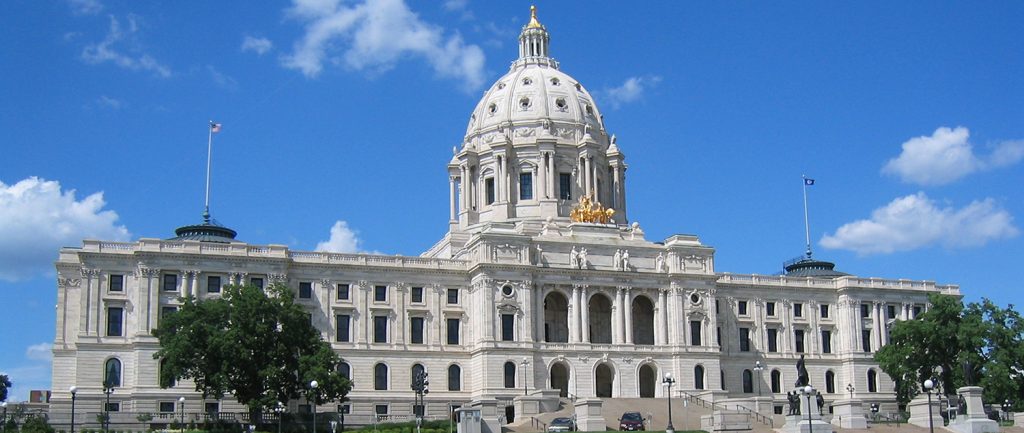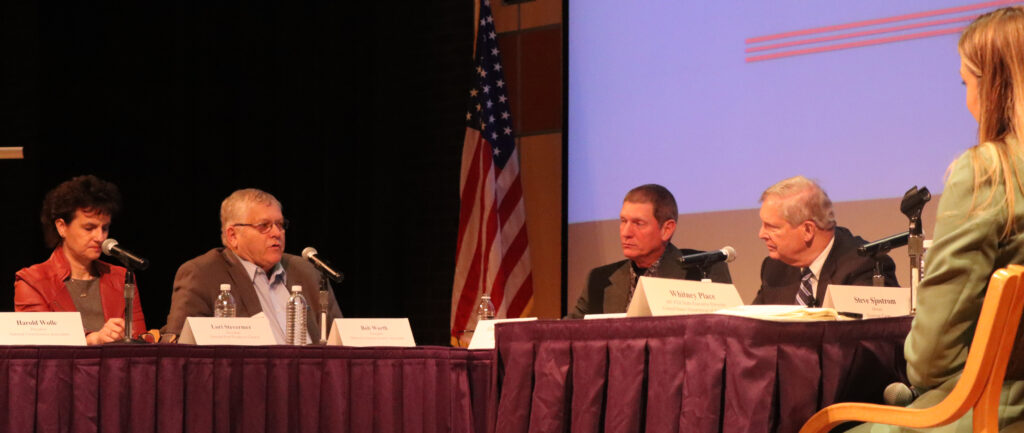An opinion in another court case involving the buffer law was recently released. This time, an environmental group seeking to make the buffer map as extensive as possible was challenging the determination of the Department of Natural Resources (DNR) when it removed miles of waterways from the buffer maps.
The order was issued by the Minnesota Court of Appeals on April 23 in a case brought by the Minnesota Center for Environmental Advocacy (MCEA). The decision was In the Matter of the Improper Inclusion of Certain Water Courses within Public Waters Inventory Maps for 71 Counties, A17-0904. Judge Peterson wrote the unpublished decision for the three judge panel that had heard the case. MCEA challenged an order of the DNR regarding the public waters inventory (PWI) and the maps used in the 2015 Buffer Law.
The Court detailed the history of the PWI. In 1979, the legislature directed the commissioner of the DNR to create the inventory. The legislature defined terms for the DNR and also set forth specific procedures to be followed in creating the inventory. The court noted that during the original PWI process, “…approximately 640 miles of watercourses that fit the definition of public waters were designated on the PWI maps as public ditches.” On the maps that were created, these 640 miles were marked with a hybrid of the public waters designation (a bold black line) and the public ditch designation (a dashed line). This bold black dashed line represented these waters that were both a public water under statute and also public ditches. The ditches, “…were assumed to be under the authority of the public drainage authorities.”
The PWI came up again at the legislature in 2015 when the buffer bill was being debated and passed into law. In 2017, the buffer legislation was amended and the buffer–zone defined “public waters” as waters that were on the PWI as it was created after the 1979 direction of the legislature.
While the DNR was in the process of creating the buffer zone maps, “…the DNR noticed that the watercourses with dual designation on the PWI maps had not been included on the PWI lists.” Recognizing this, the DNR commissioner believed that landowners along these dual designation waters may not have received notice that their land was along a public water because the waters were not on the PWI lists.
Minnesota Statutes §103G.201 (e)(2)(i) gives the commissioner of the DNR the ability to revise the PWI to correct errors in the original inventory. In March 2017, the DNR began to review, “… how to convert watercourses improperly labeled as public ditches to watercourses designated as public waters.” The DNR concluded that about 670 miles should be removed from the PWI due to the lack of notification to affected landowners during the 1979 PWI creation. The court found that “…[a]ll of the actions surrounding the removal of the watercourses were taken within the DNR; persons and entities were notified of the DNR’s actions only after the commissioner signed the order.” There were no public meetings, no hearings and no public comment period on the order.
MCEA requested the DNR revoke the order it issued and give them a chance to comment on why the 670 miles should be left on the buffer maps. The DNR denied this request on June 8, 2017, and MCEA challenged the DNR’s decision by a writ of certiorari. The court had the parties submit briefs on the issue of whether or not the actions of MCEA were properly before the court.
In its decision the court cited another case involving MCEA in which the court stated that, “’certiorari is an extraordinary remedy only available to review judicial or quasi-judicial proceedings and actions; conversely, it is not available to review legislative or administrative actions.’ Minn. Ctr. for Envtl. Advocacy v. Metro. Council, 587 N.W. 2d 838, 842 (Minn. 1999).”
MCEA attempted to argue that this was not merely an exercise of administrative function because part of what the DNR considered were comments or complaints of landowners regarding the PWI. The court found that this opposition to the PWI did not convert it into a quasi-judicial process. The court dismissed the appeal due to lack of jurisdiction over the challenge.
At the center of the MCEA’s complaint on the DNR’s action was that they felt that they were denied their rights of due process when they did not receive an opportunity to comment on the commissioners order. The ironic aspect of this challenge by MCEA is that a lack of due process is exactly what the DNR was attempting to correct when it issued its order. By not giving notice to the affected landowners in 1979, putting their waterways on the PWI maps with a separate designation from public waters, and by not putting the waters on the PWI list, the DNR had violated the landowners due process rights in 1979. As the court stated, “…the landowners may have failed to object to the original designation of these watercourses as public waters.”
This determination by the DNR was the right decision, but is only half of the story. In 1979, the PWI had no consequence for landowners. The state law requiring buffers on these PWI waters came into existence 36 years later. While counties may have put in ordinances, and zoning rules put buffers in place in theory, there was no consequence of a water being included in the PWI to your land in 1979. There was little reason for an individual to challenge a PWI determination in 1979.
Had landowners known that nearly four decades later a 50-foot buffer would be required, you probably would have had more challenges. Many of the landowners facing the loss of acreage on their farms had no meaningful participation in the 1979 creation of the PWI. The due process rights of all of these landowners was ignored in the creation of the buffers by the legislature and the DNR when considering challenges to the PWI maps.
Hopefully, as we work our way through the buffer law implementation, property owners rights will be meaningfully considered by the legislature, agencies and courts.




